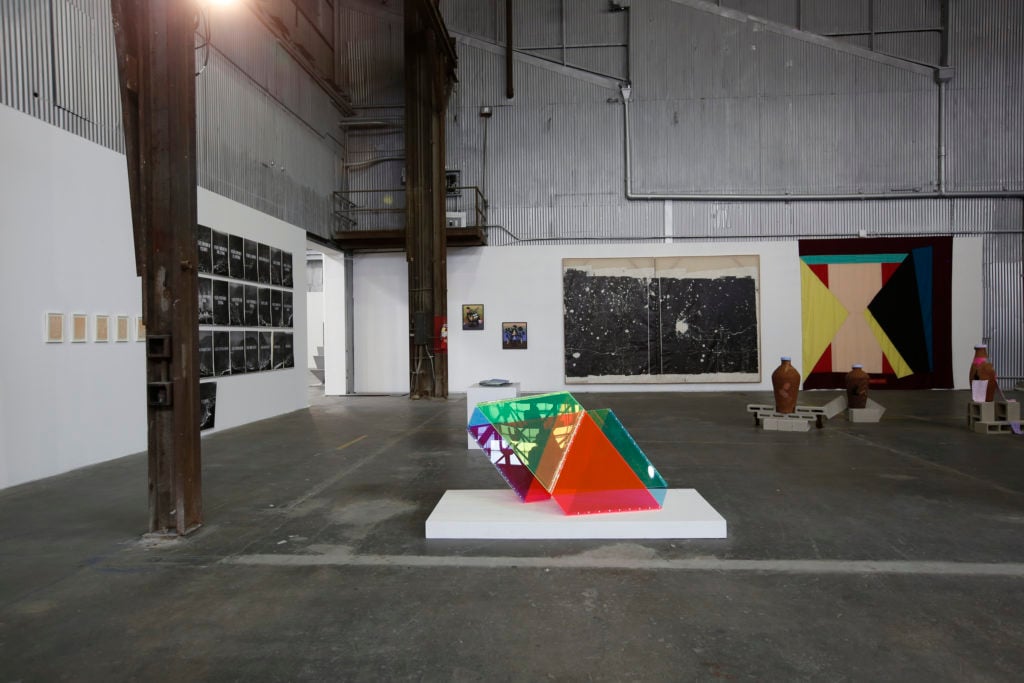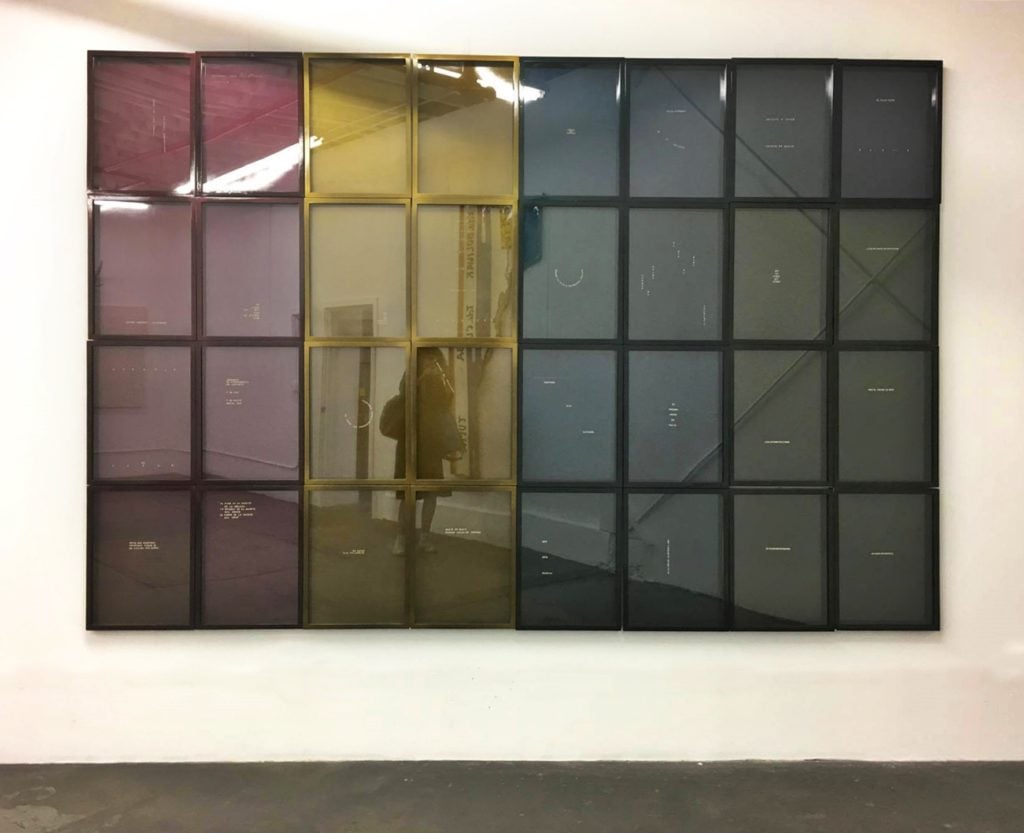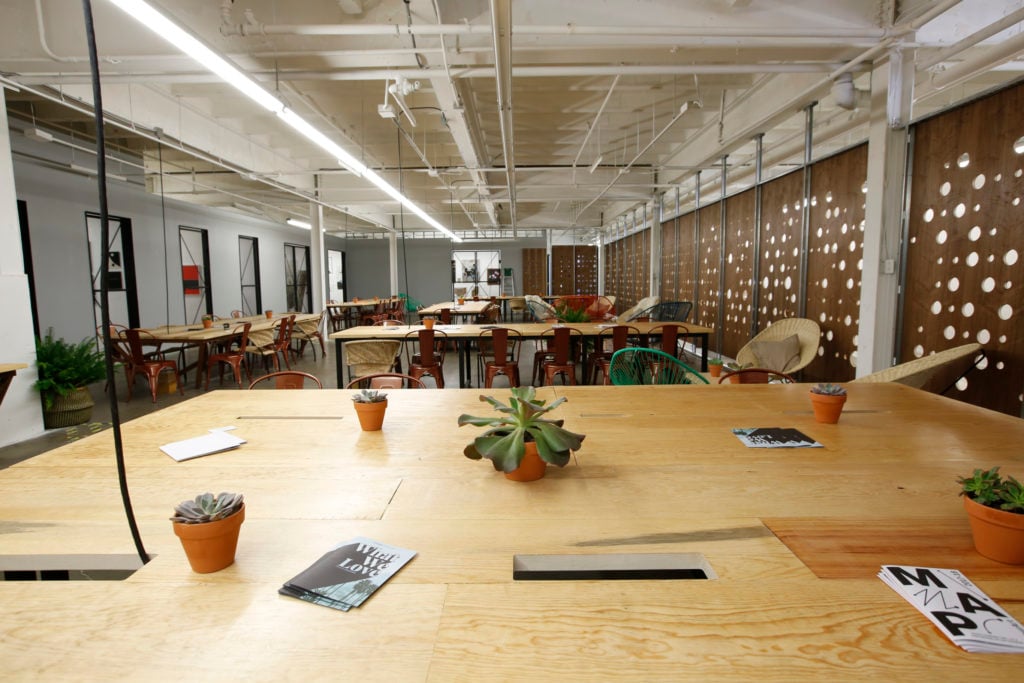Market
A New Fair for Latin American Art Opens Without Borders—Or Booths—in Los Angeles
No one's building a wall at this six-week fair, which coincides with Pacific Standard Time.

No one's building a wall at this six-week fair, which coincides with Pacific Standard Time.

Janelle Zara

The exhibition-art fair hybrid proyectosLA launched its inaugural edition in Los Angeles this past weekend and, with it, an experimental new model. Coinciding with the Latin American focus of Pacific Standard Time: LA/LA, the 20 participating galleries in proyectosLA come from eight Latin American countries, including Revolver of Lima and Vermelho of São Paulo. Rather than presenting work in individual booths, the event is staging a six-week-long, 64-piece curated exhibition, through October 28.
Driven by the “political momentum” of the current presidential administration, as well as the “celebration beyond borders” tagline of this edition of PST, “It was very crucial for us to make a statement: no walls,” says brand strategist Patricia Fajer, who co-founded the fair with art advisor Teresa Iturralde and collector Tracy O’Brien. They commissioned curators Luiza Teixera de Freitas and Claudia Segura to work directly with gallerists in selecting pieces for their exhibition, this year titled “Here the Border is You.”
Set in a 20,000-square-foot former warehouse downtown with 30-foot ceilings, the gallerists, who pay a tiered entrance fee according to the number of works they show (one is the minimum, six the maximum), have made the most of the peculiar and seemingly limitless space with a number of large-scale works. A scroll of black-stained flags in José Luis Landet’s Banderas Negras, 2017, brought by Mexico City gallery Arroniz, unfurls from a horizontal steel beam. Hanging from the ceiling are three 12-foot-long quilted tapestries by Carolina Caycedo, titled Mujeres en mi, 2010, brought by Bogotá’s Instituto de Visión.

Artemio’s VM4994–VM4990 (from the series Los que mueren son los otros) (2016–2017). Courtesy of the artist and Y Gallery.
Perhaps taking the borderless theme a step too far, works by artists including Jesús Rafael Soto and Amalia Ulman have been mounted without “the use of walls, categories or groupings” at all, according to the curatorial statement, “and the separations will only appear where the viewer decides to create or locate them.” One row that includes Carlos Cruz-Diez’s “Fisicromía” Op Art, the bodily concerns of Brígida Baltar’s embroidered blood clots, and the text-based compositions of Artemio are united—at least for this viewer—not by content but by aesthetic, a common shade of violet that each artist pleasantly complemented with golden undertones.
The opening weekend felt more celebratory and relaxed than the frenetic pace at more established art fairs. But while visitors enjoyed ceviche and tequila in the backyard lounge during the VIP preview, sales were being made. Brazilian gallery Nara Roesler sold a 1959 Hélio Oiticica hanging sculpture, Relevo Espacial n. 12, which was not exhibited but stored in one of the private viewing rooms. New York’s Y Gallery sold three pieces, including works by Alberto Borea and Artemio, and both Instituto de Visión and Mexico City’s OMR also reported sales.
Some participating gallerists sought to make the most of the attention that PST’s institutional exhibitions have shone on their artists. OMR chose to bring works by José Davila and Rubén Ortiz-Torres because “both of them are very active this week in exhibitions around Los Angeles,” says gallery director Kerstin Erdmann.

Installation view at proyectosLA. Photo: Elizabeth Lippman, courtesy of proyectosLA.
On view for a full six weeks, the exhibition also provides galleries an extended foothold in the burgeoning Los Angeles market. “For a young gallery like us,” says Instituto de Visión director Omayra Alvarado, “the prolonged time helps you build a connection and have a deeper strategy with collectors.” (Gallerists have planned to either personally return to the fair periodically or hire representatives locally to oversee sales during the duration of the fair. “The founders are also here every day to support sales and connect collectors and institutions with the galleries directly,” says co-founder Tracy O’Brien.) The fair declined to disclose participation fees, but “What I’m paying here compared to what I pay for one weekend [at another fair] is the same,” Alvarado adds.
“Cristobal Reyes of OMR gallery told me, ‘If you’re going to do an art fair for four days, I’m not interested; I want to get to know LA,’” says co-founder Teresa Iturralde. She would also like the museum boards of LA to get to know Latin America. Citing major exhibitions by Lygia Clark and Hélio Oiticica that never made it to the West Coast, she says, “We are missing out. If you don’t have boards supporting a field, you’ll never have exhibitions. Hopefully they’ll start paying attention.”